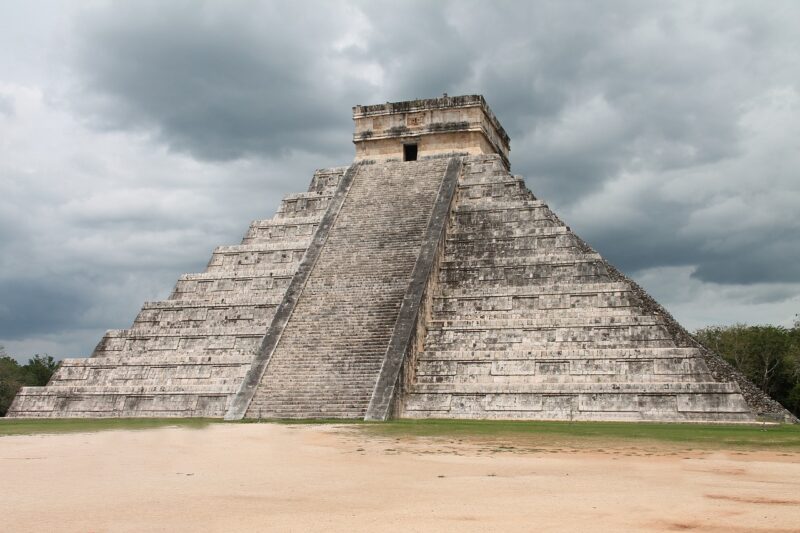
The Aztec civilization, which flourished in central Mexico from the 14th to the 16th centuries, was a complex society rich in culture, religion, and traditions. Despite its relatively brief existence, the Aztec Empire made significant contributions to human history, with a multifaceted belief system that revolved around the concepts of reverence, sacrifice, and the interconnectedness of life and death. This article will explore the intricate tapestry of Aztec society, focusing on their religious beliefs, sacrificial practices, and the societal structures that sustained one of the most fascinating cultures in history.
1. The Aztec Religion: A Cosmology of Deities
Central to Aztec society was their polytheistic belief system, which encompassed a pantheon of gods that embodied various aspects of life, nature, and cosmic phenomena. Each deity was attributed specific roles and responsibilities, and the Aztecs believed that their well-being depended on these deities’ favor.
Some of the most significant deities included:
- Huitzilopochtli: The god of sun and war, Huitzilopochtli was considered the patron of the Aztec people and played a crucial role in agricultural cycles and military conquests.
- Quetzalcoatl: Known as the feathered serpent, Quetzalcoatl was associated with wind, air, and learning. He represented the dual nature of life and was linked to the renewal of life through the seasons.
- Tlaloc: The god of rain and fertility, Tlaloc was essential for agriculture and was believed to control the waters that nurtured crops, reflecting the dependency of the Aztecs on nature’s rhythms.
The Aztecs believed that these deities required nourishment in the form of human blood to maintain the balance of the universe, thus underpinning their religious practices and societal rituals.
2. The Role of Sacrifice in Aztec Society
Sacrifice was deeply ingrained in Aztec religion and served multiple purposes. It was not only a means to appease the gods but also a pivotal aspect of social and political life. The practice of sacrifice, particularly human sacrifice, was viewed as a way to ensure the continuity of the universe and the survival of the Aztec people.
The significance of sacrifice can be understood through several key points:
- Aesthetic Significance: The Aztecs believed that the act of sacrifice was sacred and beautiful. Rituals often involved elaborate ceremonies that entrusted priests with the responsibility of conducting these offerings, making them an important spectacle in the lives of the community.
- Political Power and Control: Sacrificial rituals also had socio-political implications; leaders would use them to consolidate power and demonstrate their authority. Victories in war were often celebrated with grand sacrifices, showcasing the might of the Aztec Empire.
- Cultural Identity: The rituals created a sense of identity and unity among the populace. Community members participated in celebrations that included chanting, music, and feasting, reinforcing social bonds and the Aztec worldview.
Human sacrifices were often reserved for special occasions and were typically conducted in the context of major astronomical events and festivals, symbolizing the function of blood as a universal life force.
3. Social Structure and Sacrificial Practices
The Aztec social structure was hierarchical, consisting of nobles, priests, warriors, and common people. Each class played a unique role in the sacrificial practices, which were reflective of their standings in society.
- Nobility: Members of the nobility, or pipiltin, were often involved in high-level rituals. They could be privileged to officiate sacrifices and partake in the accompanying festivities, reinforcing their elite status.
- Priests: The professional priests had the most significant role in sacrificial rites. They were responsible for interpreting omens, performing rituals, and ensuring the favor of the gods. Maintaining an orderly calendar of rituals was part of their duties, emphasizing the intersection of time and divinity.
- Common Folk: Commoners, or macehualtin, were often the recipients of the results of sacrificial offerings, such as food distributed during festivals. While they had minimal power, their participation in communal celebrations solidified their connection to the spiritual and social hierarchies of the Aztec world.
The interplay between social structure and cultural practices manifested in the observance of specific rituals, such as the New Fire Ceremony, demonstrating how sacrifices were interwoven into the very fabric of Aztec life.
4. Major Festivals in Aztec Culture
The Aztecs celebrated numerous festivals throughout the year, each with a unique significance, often culminating in sacrificial ceremonies. Some of the most notable festivals included:
- Tlacaxipehualiztli: This festival honored Xipe Totec, the god of agriculture. It involved sacrificial rites where prisoners of war were dressed in the skins of past sacrifices, celebrating death and rebirth essential to the agricultural cycle.
- Huey Teocalli: Celebrated in September, this festival involved the great ritual of the New Fire that symbolized the renewal of life. Huge sacrifices, including a number of captured enemies, were made to ensure the sun’s rising for another cycle of seasons.
- Tlazohcamati: A festival of gratitude, this event involved offerings to the gods in appreciation of a good harvest. Food, flowers, and incense formed part of the ritual, serving as a reminder of the cyclical nature of life within the Aztec worldview.
These festivals solidified communal identities, strengthened ties to the gods, and provided a mechanism for expressing the duality of life and death in Aztec culture.
5. The Decline of the Aztec Civilization and Its Religious Practices
The arrival of Spanish conquistadors in the early 16th century marked the beginning of the decline of the Aztec civilization. The confrontation between the Spanish and Aztecs brought about disease, warfare, and cultural upheaval, ultimately leading to the fall of Tenochtitlan in 1521. Spanish colonizers sought to eradicate the indigenous religious practices, viewing them as barbaric. This suppression led to the decline of traditional Aztec beliefs, as many elements were assimilated into Christian practices or entirely lost.
However, the rich rituals and social structures of the Aztecs remain a crucial legacy in modern Mexican culture, echoing through celebrations, folklore, and traditions that highlight the resilience of their heritage. The blending of beliefs underscores the complexity of cultural exchange that occurred during the colonial period.
Conclusion: Understanding the Secret World of the Aztecs
The Aztec civilization presents an intricate portrait of a society deeply intertwined with its religious beliefs, socio-political structures, and cultural practices. Understanding their worldview offers valuable insights into human behavior, the significance of cultural identity, and the interplay between religion and society. As we reflect on the Aztecs, let us embrace the rich complexity and depth of their culture, acknowledging both their sacrifices and contributions to our shared human history.








